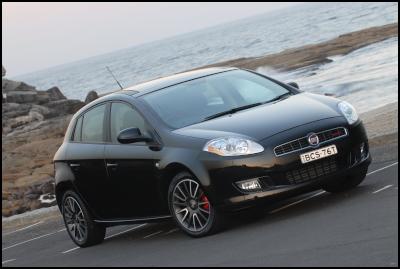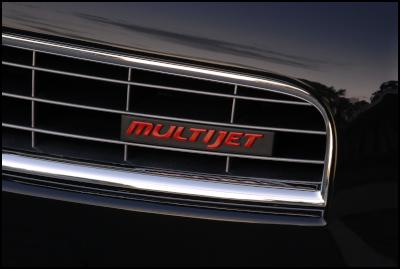Fiat Bravo Beats Sales Targets
Fiat Bravo Beats Sales Targets

Click to enlarge

Click to enlarge
FIAT BRAVO BEATS SALES TARGETS
New Zealand is sharing in the world-wide
success of the Fiat Bravo, which has broken all its sales
targets following its launch in Europe and New Zealand last
year.
With a sales target set of 70,000 cars for the 2007, the Fiat Bravo broke through that barrier with 90,000 people taking delivery of their new Bravo in 2007 and a further 30,000 orders for the new Fiat carried over into 2008. Even though the Bravo is now the top selling car in its sector in Italy, more than 60 per cent of orders for the new hatchback have come from outside its home country.
Proof that New Zealand is getting the top versions of the new Bravo is provided by the fact that the single most popular trim and equipment version in Europe is the one being offered to the New Zealand market, the Sport, while the most popular engine, the 1.9 JTD Multijet Turbo Diesel, which accounts for 55 per cent of sales in Europe, is also in the New Zealand line-up, along side the advanced 1.4 litre 110 kW T-Jet Turbocharged engine.
The success of the 1.9 litre JTD Multijet Turbo Diesel is another success for the Fiat research and development team that developed the first Direct Injection and then Direct Injection/Common Rail diesel engines for use in cars, a world first.
The first car in the world to use the Direct Injection Diesel Engine was the Fiat Croma TDI in 1986 and although this car provided substantial improvements in performance and fuel economy, it came at the cost of a substantial increase in noise at low engine speeds. This was cured by sound proofing, but it was not an ideal solution.
Thus the Fiat engineers started working on a fuel injection system that could maintain, and even enhance, the advantages of the direct injection system, but also reduce the noise associated with it. Their solution was the common rail system. This works by the ingenious system of continuing to pump the diesel into the pre-injector tank at the head of the engine, rather than straight to the fuel injectors. This means that pressure is generated inside the tank itself, which becomes a hydraulic accumulator or "rail", providing a pressurized fuel reserve ready for use.
This allows independent management of fuel pressure not related to engine speed and load and it enables pre-injection of fuel, both essential in the system that became official called Unijet. With the new diesel system ready for production, Bosch joined the programme to put it into production not just for Fiat, but so that other car manufacturers could benefit from this new technology.
The Fiat developed Multijet version of the Direct Injection/Common Rail system debuted in 2002, with the number of injections during each engine cycle is increased seven, compared to the two of the Unijet. The same quantity of fuel is burned inside the cylinder, but it is divided into more parts, so that combustion is more gradual. The advantages include reduced noise and emissions, and performance is enhanced by 6-7 per cent, accompanied by an engine performance that makes the car even more enjoyable to drive.
These results are not insignificant, especially because they come from an engine that not only represents an incredible technological leap forward compared to pre-chamber diesels, but is also a huge improvement on the first-generation Unijet engines still used by other car makers.
This lead in diesel technology means that Fiat is a major supplier of engines to other car makers, either with the direct supply of power units from its own factories or with Fiat engines being built under license by other car makers.
ENDS


 Business Canterbury: Urges Council To Cut Costs, Not Ambition For City
Business Canterbury: Urges Council To Cut Costs, Not Ambition For City Wellington Airport: On Track For Net Zero Emissions By 2028
Wellington Airport: On Track For Net Zero Emissions By 2028 Landcare Research: ANZAC Gall Fly Release Promises Natural Solution To Weed Threat
Landcare Research: ANZAC Gall Fly Release Promises Natural Solution To Weed Threat NZ Anti-Vivisection Society: Auckland Rat Lovers Unite!
NZ Anti-Vivisection Society: Auckland Rat Lovers Unite! University of Canterbury: $1.35 Million Grant To Study Lion-like Jumping Spiders
University of Canterbury: $1.35 Million Grant To Study Lion-like Jumping Spiders Federated Farmers: Government Ends War On Farming
Federated Farmers: Government Ends War On Farming



